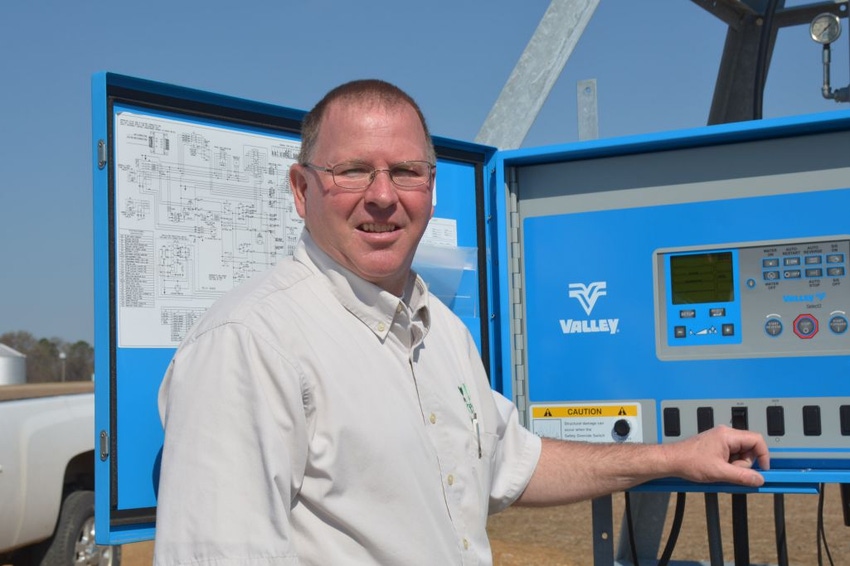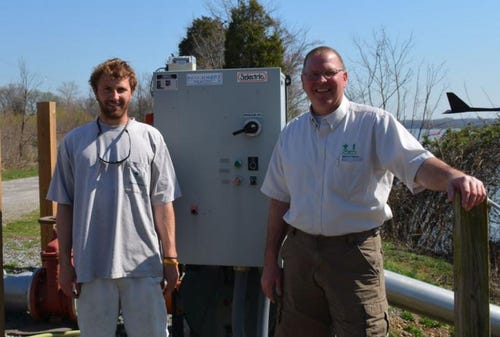
Many folks are surprised that the world record holder for the best corn yield ever farms in the East Coast and not in one of the “I” states, Iowa, Illinois or Indiana.
But for the second time in 2015, David Hula and his family, who farm in Virginia, have won the National Corn Growers Association National Corn Yield Contest.
Last year, the Hulas broke the contest record with a new all-time high yield of 532 bushels per acre. Hula also won the contest in 2013 with a whopping 454 bushels per acre, another record breaker. The 2014 winner, Randy Dowdy of Valdosta, Ga., also farms in the Southeast. He broke Hula’s record that year where he clocked in an impressive 503 bushels per acre.
(Editor’s note: Southeast Farm Press visited David Hula’s Charles City, Va., farm in March. This is part two of a three-part series with the corn yield champion.)
“When you think of high yielding corn, you certainly don’t think of the East Coast,” says Hula, who farms in three counties along the James River near Charles City, Va. “What we have learned is the production practices can be duplicated. We’ve had success in Charles City; we’ve had success in Henrico County, and we’ve had success in James City County. The key is you have to identify your limiting factors so they don’t become limiting factors.”
Hula farms 4,000 acres of wheat, soybeans, corn and oats with his brothers Johnny and Jeff and his son Craig. Hula’s father Stanley has mostly retired, but still provides much needed guidance from his years of experience running the operation. “We’re a true family farm,��” Hula says. “I was blessed to farm with my granddad and my dad and my brothers, and it’s great to have Craig on board.”
Hula says the key to success is pay attention to details and to try different things. He points to lessons he learned from Francis Childs of Manchester, Iowa who was one of the first corn farmers to produce more than 400 bushels per acre a number of years ago. Childs stressed the importance of a positive attitude and that rings true for Hula as well.
“Francis Childs said the number one thing to improve yields is you have to be willing to change. That really resonated with me when I first heard it. Achieving top yields is a systematic approach which we have grown to understand over time. When you change one level of production, you have to elevate all the others. It may not be all proportional, but there have to be some adjustments.”
Hula’s land is no till or “never till” as he puts it. Stanley Hula was an innovator when he started a continuous no-till program in 1986. Since 1991, all of the ground the Hulas farm has been continuous no-till. When he picks up new ground, Hula says we may till the soil to smooth out the land and then never till will proceed. He knocks down the beds that have been formed and begins a never till program.
Twenty percent of Hula’s acres is irrigated. “Our irrigated production is improving every year. We have the goal of trying to pick up 5 percent in yield every year and some years, we have done really well. This past year, we way exceeded 5 percent.”
Good heat and good moisture at the right time
In addition to the key role of uniform emergence, Hula chalks up last year’s banner harvest to good heat and good moisture at the right time. The farmwide average was more than 200 bushels per acre and quality was high.
“Last year, we were able to do some late season nitrogen which allowed us to take advantage of some of the moisture we accumulated over the season. We like to adjust our fertility program according to the weather. We like to put out a certain amount of fertilizer when we plant and them come back side dress some more at the V5 or V7 stage. If the conditions warrant, we will side dress some more significantly later.”
Hula says the longstanding university fertility recommendation of one pound of nitrogen per one bushel of corn still rings true. Timing is important and very often late season nitrogen works best.
“With the equipment we use today, we can put that late season nitrogen on and we’re picking up bushels by doing it. We’re not putting any more fertilizer out; we’re just changing the timing. We’re being good stewards of the land and we’re also being economical,” he points out.
Farming in the Chesapeake Bay Watershed is certainly a challenge with a nutrient plan, a conservation plan and a pest management plans all part of the job. “We farm as close to the water as we can, and we are good stewards. We don’t over fertilize. We try to be efficient,” Hula says.
“The James River today is a lot better than it was when I was a kid. A lot of improvements have been made, and most of the improvements on the ag side were voluntary. You have to be good stewards,” he says.
Hula says both his grandfather and father always emphasized the importance of making the land better for the next generation which he also stresses. He wants the land to be even better for his son when he takes over.
“Being a good steward makes economic sense. When you take care of your land, your land will take care of you,” Hula says.

Craig Hula, left, has joined the farming operation with his dad David Hula and uncles Johnny and Jeff. Craig’s grandfather, Stanley Hula, has mostly retired but still provides much needed guidance.
About the Author(s)
You May Also Like






